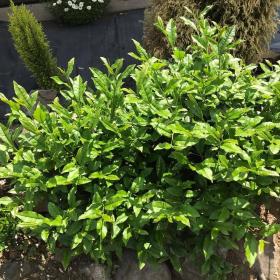Ingredients
Camellia sinensis (L.) "Kuntze" or "Thea sinensis L.". Green Tea is a small Asiatic Indonesian tree, highly ramified and reaching heights of up to 5 to 10 m.
Green Tea has whole, persistent, petiolate leaves in an oval-oblong shape, 5 to 10 cm in length and 2 to 4 cm in width; they are acuminate and edged on two-thirds of the upper edge, with black teeth bent downwards. The young leaves are soft and twisted and later become coriaceous and glabrous.
The flowers appear alone or grouped in 2s or 3s at the axillae of the leaves. Camellia sinensis's flowers comprise five oval sepals and 6 to 9 white or creamy petals, round and concave and slightly welded at the base.
A large number of stamens surround the pistil with five bi-ovulate cavities. The fruit is a small, round capsule with a lignified wall, loculate dehiscent, enclosing one exalbuminate seed per cavity.The part of the tree used is mainly the young, light leaves. The tree is often cut to facilitate collection and increase leaf production. The leaves are picked by hand because a careful selection is needed.
Green Tea is characterized by its polyphenol content, particularly that of catechol tannins (10- 20%, depending on the age of the leaf), catechol, epicatechin (free and esterified with gallic acid), and the products of condensation of the 3-flavanols.
There are large quantities of flavonoids in Camellia sinensis leaves. The methylxanthin content varies according to the varieties (2.0-4.0%), with caffeine (teine) being the majority component. We also find smaller amounts of theophylline and theobromine, as well as traces of adenine and xanthine. Tea also contains proteins (up to 10%), hexoses (from 1 to 2%), vitamins (mainly C and B), and traces of essential oil.
